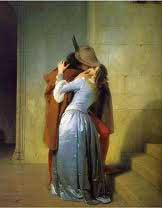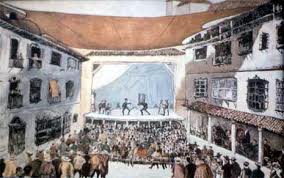Romanticism theatre
The Spanish Romantic theatre, like the rest of the Romantic literature in Spain, signified a rupture with the harmony and balance of the earlier Neo-classicist movement. Romanticism favors excess, exoticism, passion and feeling to reason or measure. The better known writers of the Spanish Romantic theatre period are José Zorrilla and the Duke of Rivas.
Theatre of the Spanish Romanticism

The forerunner of Spanish Romantic theatre is considered to be William Shakespeare, and in fact he did write about some of the popular Romantic topics during the Baroque period. However, Romanticism as a movement began in Germany and from there spread to the rest of Europe. Neoclassical theatre never had too many followers in Spain, and most of the plays represented during the 18th century dated back to the 17th century and the Golden Age.
Due to the fact that Romanticism arrived in Spain when most of the other European countries had already moved on to another movement, the school of Romantic literature was much more intense than in other parts of the continent, mainly because they already had all the resources available, and all the translations of the great Romantic literates to hand.
The star topic of Spanish Romantic theatre is love, but the kind of love that has to overcome many obstacles, and which almost always ends in tragedy. Fatality, cruel destiny and vengeance are also popular topics in the Romantic plays. They are usually set in the Middle Ages, with adaptations made by the author to best suit his needs. This is when the medieval Gothic settings begin to become popular, with characters such as vampires or ghosts, and plots that mixed romance, drama and horror. The authors also show a growing preoccupation towards the social inequalities they saw in their contemporary society, and they stage the importance of the individual over moral codes, the fight for political freedom, the passions and the soul conflicts from which they suffer.

In a way similar to playwrights who wrote in the Baroque period, Spanish Romantic theatre rejects the three units of narrative: time, place and action. Authors write without any restrictions, they use different settings, divide the plays in acts and use the metric measurements that best fit their plays.
Scenery starts gaining importance, and the decoration changes completely from one play to the other, transforming the theatre into a different world for each piece. They even had special effects. The new technical advances made it possible to have rotating or elevating platforms, steam engines, gas, electricity... Theatres would compete against each other and try and outdo themselves with ever more elaborate sets and special effects. The aim of the plays also changes. Whereas the Neo-classicist theatre was educational and had the aim of teaching the audience, the objective of Spanish Romantic theatre was to move the audience.
Language turns eloquent and rhetoric, and verses and prose mix for the first time. Monologues, which are the best way of expressing each character's feelings, become popular again. Even though the Spanish Romantic theatre tries to break loose from everything that reminds them of Neoclassicism, they still use some of the formulas of classic theatre, even though they don't use the forms. For example, anagnorisis is used frequently at the end of Romantic dramas, even though it was also a popular resource during Neoclassicism.

Characters, with the will to do as they please, embody freedom. The main character is normally a male hero, mysterious and brave, who follows some kind of fatal destiny even through the pursuit of happiness. He is a rebel and a seducer, who doesn't follow any rules or adhere to any impositions. If there's one, the female hero will follow him, and she will always be loyal and innocent. The plays usually finish tragically, with a death that frees both characters. Also, action and the acting of the characters gain more importance than the psychological motivations they may have.
All these changes brought by the Spanish Romantic theatre signify the end of the "corral de comedias" and the beginning of the Italian style of theatre in Spain. However, the buildings of the "corrales de comedias" are still standing and can be seen in Madrid and Ciudad Real.

